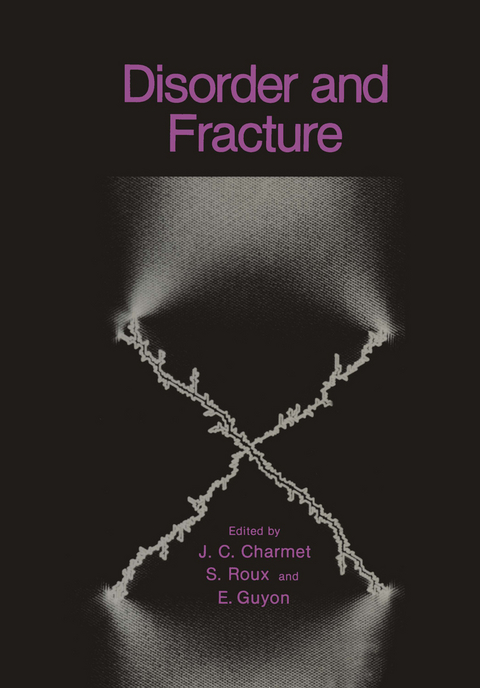
Disorder and Fracture
Kluwer Academic/Plenum Publishers (Verlag)
978-0-306-43576-8 (ISBN)
Fracture, and particularly brittle fracture, is a good example of an instability. For a homogeneous solid, subjected to a uniform stress field, a crack may appear anywhere in the structure once the threshold stress is reached. However, once a crack has been nucleated in some place, further damage in the solid will in most cases propagate from the initial crack, and not somewhere else in the solid. In this sense fracture is an unstable process. This property makes the process extremely sensitive to any heterogeneity present in the medium, which selects the location of the first crack nucleated. In particular, fracture appears to be very sensitive to disorder, which can favor or impede local cracks. Therefore, in most realistic cases, a good description of fracture mechanics should include the effect of disorder. Recently this need has motivated work in this direction starting from the usual description of fracture mechanics. Parallel with this first trend, statistical physics underwent a very important development in the description of disordered systems. In particular, let us mention the emergence of some "new" concepts (such as fractals, scaling laws, finite size effects, and so on) in this field. However, many models considered were rather simple and well adapted to theoretical or numerical introduction into a complex body of problems. An example of this can be found in percolation theory. This area is now rather well understood and accurately described.
I. Tools.- 1 Fluctuations of Interfaces and Fronts.- 2 Introduction to Multifractality.- 3 Statistical Theory of Fragmentation.- II. Diffusion-Limited Aggregation Model.- 4 Theory and Simulation of Diffusion-Limited Growth.- 5 Growth Patterns and Fronts: Fluid Flow Experiments.- 6.1 From Flow to Fracture and Fragmentation in Colloidal Media 1: Non-Newtonian Fingering and Visco-Elastic Fracturing.- 6.2 From Flow to Fracture and Fragmentation in Colloidal Media 2: Local Order and Fragmentation Geometry.- III. Statistical Fracture Models.- 7 Simple Stochastic Models for Material Failure.- 8 Scaling Theory of the Strength of Percolation Networks.- 9 Scaling in Fracture.- IV. Rheology and Fracture.- 10 Micromechanics of Brittle Deformation Processes.- 11 Fracture Mechanics and Solid Adhesion.- 12 Damage Evolution, Instability and Fracture in Ductile Solids.- 13 Aspects of Nonlinearity and Self organisation in Plastic Deformation.- V. Materials and Applications.- 14 Granular Media: Effects of Disorder.- 15 Cracking and Fracture of Concrete: Size Effect or Scaling Law?.- 16.1 The Phenomenology of Earthquake Occurrence.- 16.2 The Modeling of Earthquake Occurrence.
| Erscheint lt. Verlag | 31.1.1991 |
|---|---|
| Reihe/Serie | NATO Science Series: B ; 235 |
| Zusatzinfo | 316 p. |
| Verlagsort | New York |
| Sprache | englisch |
| Maße | 178 x 254 mm |
| Themenwelt | Mathematik / Informatik ► Mathematik ► Angewandte Mathematik |
| Naturwissenschaften ► Physik / Astronomie ► Allgemeines / Lexika | |
| Technik ► Maschinenbau | |
| ISBN-10 | 0-306-43576-4 / 0306435764 |
| ISBN-13 | 978-0-306-43576-8 / 9780306435768 |
| Zustand | Neuware |
| Informationen gemäß Produktsicherheitsverordnung (GPSR) | |
| Haben Sie eine Frage zum Produkt? |
aus dem Bereich


